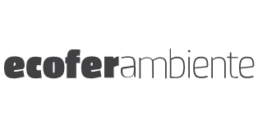Plants
Rome
In Lazio ECOFER AMBIENTE Srl manages the landfill for special hazardous and non-hazardous waste (fluff and other fractions), divided into 3 containment areas for a total of 2,200,000 cubic metres; one of which is exhausted and in the post management phase, one is operational (about to close) and a third, about 900,000 cubic metres, already set up to begin the spreading and layering of waste. Facility built in accordance with the standards (construction criteria) provided for by Legislative Decree 36/03 for hazardous waste, yet it is only receiving non-hazardous waste.
EWC codes treated
The facility, although authorized to dispose of hazardous codes * 19 10 03 (light fragmentation fractions (fluff-light) and dust, containing dangerous substances) and * 19 10 05 (other fractions, containing dangerous substances), it is company policy not to dispose of these codes; despite the fact that the facility was built according to the standards necessary to also accommodate hazardous waste.
150,000
tons/year
Amount of waste disposed of
15
per day
Vehicles handled
6
-
Number of clients
2006
-
Year of opening
2031
-
Expected closure
Disposal Procedure
Acceptance, plant entry, unloading and plant exit
Document checks upon acceptance
When the vehicle enters the landfill site, the following is checked and verified: the transport documentation complies with current waste legislation; the transporter has approval for the specific type to be disposed of; it has the prescribed organization. The load is not accepted and returned to the sender in the following cases: the specific type of certification or approval is missing; the transport documentation does not comply with legal requirements or the means of transport used for transporting the waste does not have the correct organization.
Examination of the load
Once the document check stage is successful, the load will be examined if possible, to verify that it corresponds with the approved waste. Should there be any doubt as to the compliance of the waste with the approval, or simply as a sample check, analytical checks are carried out on the incoming loads following the instructions in the relevant procedure (POI 08). If the examination of the load is successful, the next stage is the weighing.
Unloading the waste
The vehicle stops on the weighbridge to check the gross weight, then goes to the landfill area currently in operation and unloads the waste. Personnel assigned to handling the unloaded waste, before it is dealt with, perform a further visual inspection of the load. If unsuitable material is found, the Landfill Site Manager is notified. The Landfill Site Manager examines the unloaded material to verify its compliance with the approved waste. In the event of non-compliance with the approval, the Landfill Site Manager issues the order to reject the load.
Exit of the vehicle
After unloading, the lower part of the vehicle is cleaned in a specially equipped area (where necessary). Cleaning the vehicle body is prohibited. The vehicle leaving stops again on the weighbridge to weigh the tare. In this way the correspondence of the weight indicated on the waste transport form is verified with the load actually transported. The driver of the vehicle is given the waste identification form with the affixing of the stamp to confirm disposal.
Benefits for local communities
Thanks to the construction of the facility, the area, initially used as a site for abusive and uncontrolled dumping and extremely run down, has been totally reclaimed; the workforce was hired from the local area and all the suppliers have been carefully selected according to criteria of reliability and strong ties with the area itself, in order to help grow the local economy.
- Local projects: for many years, there has been a partnership with a voluntary association that runs the local kennels, from which some former strays have also been adopted.
- Best practice: thanks to an evapotranspiration process, water from the offices is disposed of on site; the old lighting system has been replaced with the latest generation LED lamps (better efficiency, lower consumption, lower indirect environmental impacts).
- Technologies for reducing the impact on the environment: leachate purification plant with two-stage reverse osmosis technology. Thanks to this system, the leachate is disposed of avoiding all the potential risks related to temporary storage in tanks, awaiting transfer to the authorized treatment plants, and all the undesired effects (traffic, fuel consumption and consequent atmospheric emissions) linked to the vehicle movements necessary for transport to the plants themselves.
- Environmental Report: drawn up periodically, on the occasion of significant changes (last drafting in 2014).
Periodic editing of the document on the “Quality and Environmental Policy”, on the occasion of the updates of the EMS (Environmental Management System). - Renaturalization of the area in the post-operative management phase: more complex redevelopment projects are being defined, there is still a long way to go until the end of the facility’s life cycle.
Furthermore, Ecofer Ambiente has adopted a code of ethics since 2011 and it works first-rate universities such as with: “La Sapienza”, Roma Tre and University of Padua in the field of research for environmental protection.








